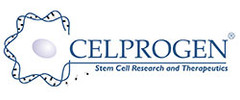Product Description
Human Hair Follicle Primary Cell Culture - Frozen Vial Source: Human Frontal region Scalp extracted from Hair Follicle bulge Positive Markers: bl-integrin, Keratin 15, Keratin 19, CD71, SA 200 Also Avaliable as: T25 plated cells shipped at room temperature. Cat#36060-01-T25 T75 plated cells shipped at room temperature. Cat#36060-01-T75 T150 Plated Cells shipped at room temperature. Cat#36060-01-T150 T225 Plated Cells shipped at room temperature. Cat#36060-01-T225 120 Population doublings or up to 12 passages. One million viable cells upon thawing of frozen cells, frozen vial of cells shipped in dry-ice. This product would require pre-coated flasks with Human Hair Follicle Primary Cell Culture Complete Extra-cellular Matrix Cat# E36060-01 and Media with Serum Cat# M36060-01S, and for serum free conditions M36060-01 is required provided the cells are weaned off the serum, as indicated in their specified protocol provided with purchase of these cells. Cells are only guaranteed with purchase of Celprogen Media, Extra Cellular Matrix, Trypsin EDTA, 1X PBS, and freezing media for the appropriate cell culture, for 30 days from the date of shipment. For non-academic use, please inquire for pricing.Publication
Poster - Human Triple Negative Breast Cancer Stem Cells Publication
Human HER2+ Breast Cancer Stem Cells Publication
Poster - Human HER2+ Breast Cancer Stem Cells Publication
Poster - Drug Discovery Therapeutics for Triple Negative Breast Cancer Patients Publication
Drug Discovery Therapeutics for Triple Negative Breast Cancer Patients Publication
Cancer Stem Cells Being Utilized in Cell-based Assay Screening Publication
The Role of CXCR3-Ligand Axis in Cancer Aryl Hydrocarbon Receptor is a Transcriptional Activator of the Human Breast Cancer Resistance Protein, BCRP,ABCG2
BCTT-85202-identification-of-genes-involved-in-breast-cancer-and-breast
Correlation between Cancer Stem Cells and Circulating Tumor Cells and Their Value
Optimization of siRNA Transfection for Breast and Glioa Cancer Cell Cultures
Phenotypic Plasticity in Normal Breast Derived Epithelial Cells








